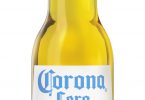Drinking in our export success
We may be accused of drinking a lot, but Ireland also sells a lot of drink overseas. The impact of our beverage exports on the domestic economy far outweighs other products manufactured here for international markets due to drink’s high level of locally-sourced inputs. This is one of a number of significant findings about the Irish drinks industry in a new DIGI-commissioned report Beverage Exports 200-2011 from DCU Business School’s Anthony Foley.
We’ve a number of fine beverage brands unmatched in terms of global recognition by any other sector of industry.
Such brands help reinforce the image of Ireland as being a source of high quality products thereby providing indirect assistance to exports of other Irish products and services.
With the Government having identified that exports will be central to economic recovery, DIGI intends working closely with it to build on current successes, identify new markets and help remove barriers to trade in some of these emerging markets.
The report shows that while the UK and US continue to be the main markets for Irish beverages overseas, there’s major potential here for additional sales to China, India and other major emerging markets.
At present Guinness, Baileys and Jameson are consumed in over 100 countries but closer to home the C&C brand Magners can boast a substantial presence in the UK market.
Previous and future roles of exports
The report points out that exports – and to a lesser extent investment – are the only likely sources of growing demand that will generate economic growth.
“Exports are expected to be the main source of demand growth with increases each year from 2011,” it states.
Domestic content in exports
Beverage exports are worth more to the domestic economy than other leading exports from Ireland such as pharmaceuticals and chemicals as beverages use a higher proportion of domestically-produced inputs. Pharmaceutical and chemical exports have less domestic content.
Based on its own calculations the DIGI report estimates, “€100 of beverages exports has the same impact on the economy as €625 of chemicals/pharmaceutical exports or €294 of computer, electronic and optical exports or €185 of medical devices exports”.
Performance of beverage exports
With our beverage exports growing 11 per cent in 2010 to €1.1 billion, we rank 11th in terms of our share of alcohol exports on a global scale compared to our 33rd place for overall merchandise exports. However it’s worth noting that all Top 10 countries have substantially bigger economies than Ireland which nevertheless contributes 2.4 per cent t0 the global beverages export figure compared with 0.8 per cent for our overall merchandise exports.
Beverage Export mix
Substantial changes in the value of the product mix have occurred down the years from 2000 to 2010 as total beverage exports grew in value by 28.6 per cent from €854.4 million to €1,098.8 million.
Within this, alcohol values grew 25.2 per cent from €799.3 million in 2000 to €1,000.7 million in 2010.
Liqueurs appear to be the only alcohol category to have suffered a value decline during this time. At €452.2 million, liqueurs’ 52.9 per cent dominance of the overall alcoholic product mix in 2000 had fallen 15.6 per cent to just 34.7 per cent by 2010’s figure of €381.5 million (partly related to the opening of a production facility in Northern Ireland).
By contrast, cider’s presence in the overall mix grew by an incredible 1,007.5 per cent from €14.6 million or a 1.7 per cent share in 2000 to €161.7 million or 14.7 per cent in 2010 but cider’s share dropped greatly in 2011, reckons the report.
Meanwhile beer’s shareholding has been reduced from 28.2 per cent to 24.3 per cent despite a value growth of 10.7 per cent from €241.1 million to €266.9 million. Guinness Stout dominated beer exports while ‘whiskey’ exports were dominated by liqueurs, states the report.
Whiskey exports grew 102.6 per cent to €180.5 million or 16.4 per cent of the overall mix in 2010 compared to its value in 2000 of €89.1 million or 10.4 per cent back then.
But whiskey is the only alcohol product (excluding the residual “other” group) to enjoy a higher export value in 2010 and 2011 than in 2007.
Beverage destinations
The British market for our beverage exports has increased, taking 19.9 per cent of them in 2001 and 29.2 per cent in 2010. Indeed the British provided us with our largest national market increase of 91.4 per cent during this time, mainly accounted for by the growth of cider exports from very low levels at the start of the decade to €132.7 million in 2010.
Beverage exports to the EU beyond the UK declined from 28.8 per cent of our global export total value in 2001 to 19.0 per cent in 2010, a drop in value of 39.1 per cent.
The top five destinations for beverage exports in 2010 were Great Britain at €321.1 million, the US at €273.6 million, Northern Ireland at €109.5 million, Canada at €71.6 million and Germany at €42.2 million. This was followed by France (€33.3 million), Italy (€20.0 million) and by Latvia (€17.3 million).
Great Britain, the US and NI accounted for 64.1 per cent of our total beverage exports in 2010 compared to 55.8 per cent in 2001.
Great Britain, our largest national cider market, accounted for 82.1 per cent of cider exports in 2010, part of the wider EU which accounted for 87.7 per cent. The EU was responsible for 66.8 per cent of beer exports with Great Britain being responsible for 22.5 per cent.
“Northern Ireland was the largest single national market for beer exports and exceeded Great Britain which was in second place,” states the report.
Our whiskey exports were more geographically dispersed than cider and beer.
The EU accounted for 44.2 per cent of whiskey exports and the rest of the world absorbed the other 55.8 per cent. The largest national market for our whiskeys and liqueurs exports was the US taking 38.1 per cent and 37.1 per cent respectively.
Beverages in balance
In 2011 a trade surplus in beverage exports over imports of €377.6 million was achieved. This beverage trade surplus has been a constant down the years. Over the past 11 of them it has ranged from €251.5 million in 2002 to €557.9 million in 2006.
Our beverage exports are therefore substantial both by national and international standards.
Over the past five years beverage exports have ranged between 61 per cent and 90 per cent of dairy exports which are widely regarded as a significant export sector.
The empirical aspects of beverage exports identified in the report provide a very solid base for future export expansion. However the report expresses some concerns about the performance in the decade including the decline in liqueurs since 2007, the recent cider performance and the slow growth of beer over the full period.
But the emergence of new markets such as China and India with a potential taste for Irish products and the size of the Irish diaspora all suggest substantial additional export potential for Irish alcohol products around the world.








